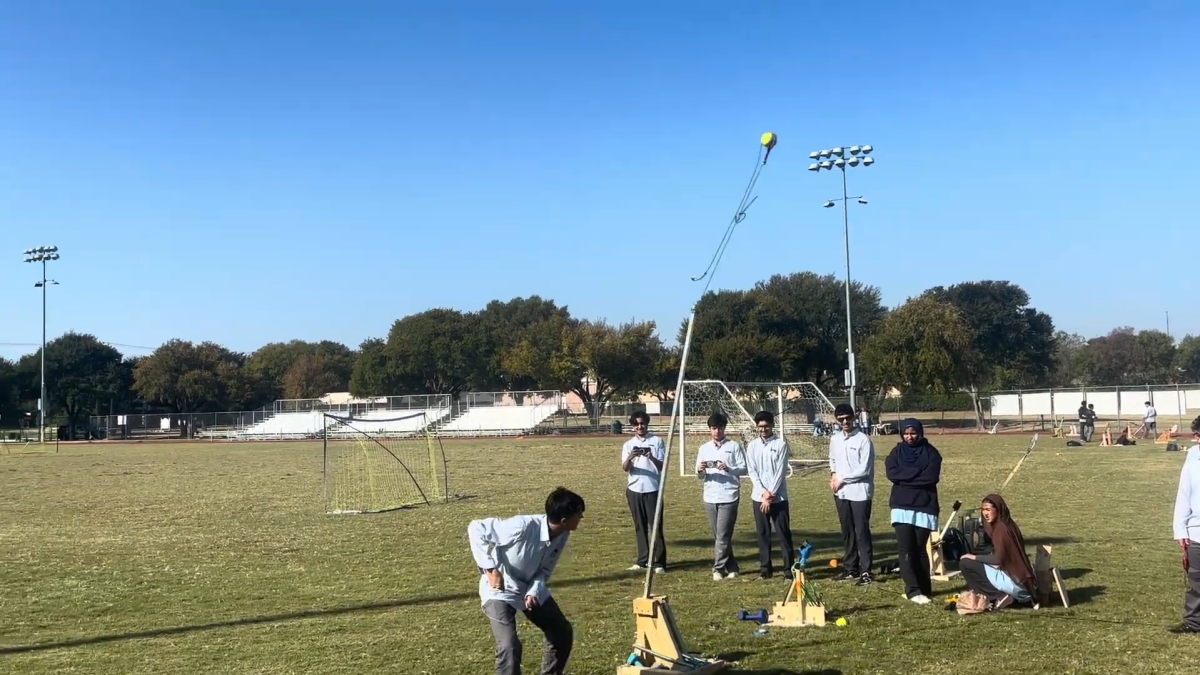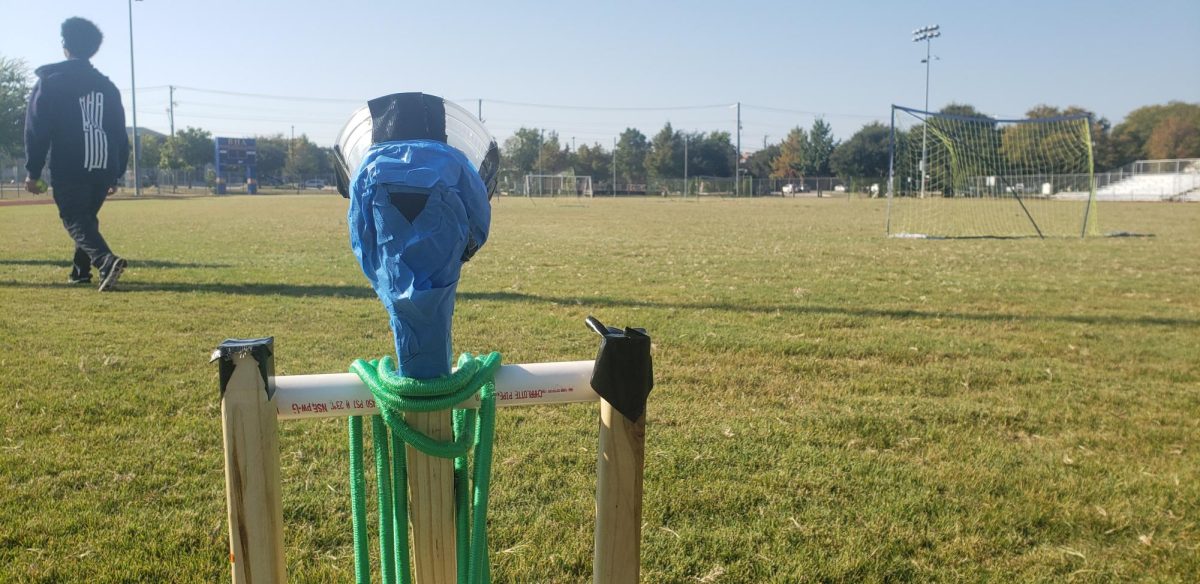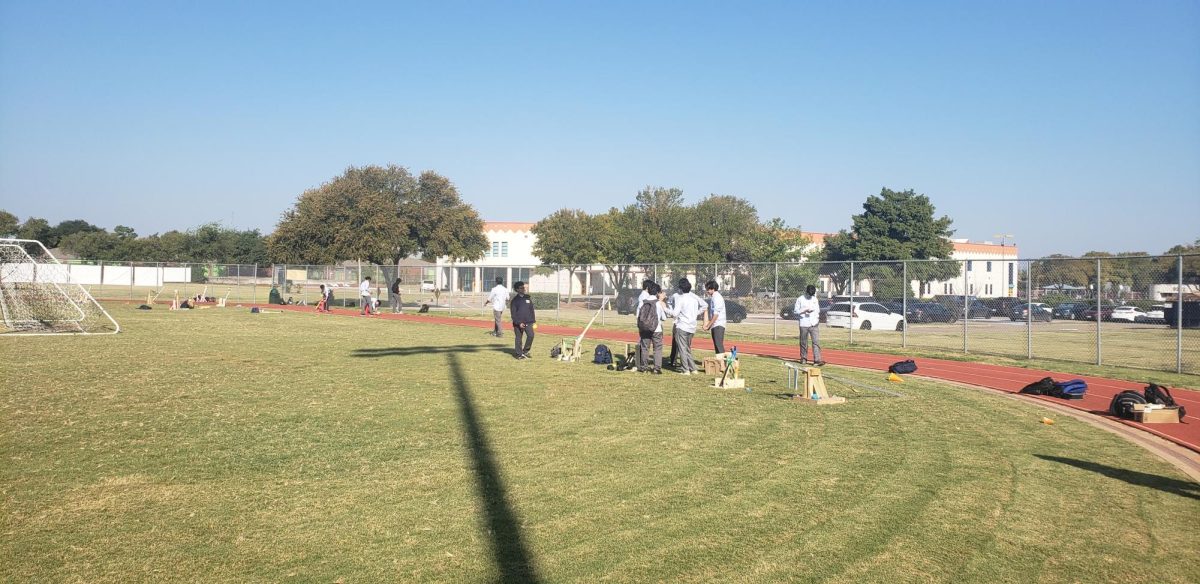
After nearly a month of hard work and preparation, the school’s juniors put their catapult projects to the test on the morning of Friday, October 3rd. Hopes ran high as students not only got to test their inventions, but also see the impressive work of their peers.
The Junior Catapult Project has been a longstanding tradition at Brighter Horizons Academy. Every year, juniors studying projectile motion and kinematics in the physics classroom get the opportunity to put their knowledge to work and build a catapult. Students typically receive the project around the end of August and have until the beginning of October to finish. While this may seem like plenty of time, students often find themselves challenged by the project’s complexity. Furthermore, the relentless pressure of work from other classes paired with extracurriculars only makes matters more complicated.
As pointed out by Ahmed Sajjad, a junior, “I feel like definitely, it was a bit overwhelming at first, due to the workload of this project as well as our other classes. But in the end, it was manageable, as we decided when to work on the project so it wouldn’t conflict with other classes.”

Most students began meeting with their groups and outlining potential designs for their catapults around mid-September. Despite constituting just the first step of the project, this design phase was no easy task. Students had to comply with certain constraints while ensuring that they met certain goals in order to receive full credit. As student Mohsen Ahmad points out, “there was a size constraint, as well as a constraint on the amount of metal we could use. There was also somewhat a constraint on money. We had to have our catapult launch at least 10 yards.”
Adding to the adrenaline of this undertaking was the fact that a grade wasn’t the only thing on the line: there was a competition.
Following in the footsteps of tradition, the catapult project also awards the 3 groups whose contraption can launch a softball the farthest. This meant that students not only had to meet certain goals within constrained inputs, but perform the best they possibly could if they wanted to win.
Ultimately, after weeks of designing, refining, troubleshooting, and testing, catapult after catapult could be seen lined up on the school’s soccer field on the morning of October 3rd. The day of anticipation had finally come. For many, this project had become much more than just a graded task; it had become a journey of perseverance, creativity, and effort.

Due to the sheer volume of projects, students of different sections tested their catapults at different times throughout the morning. Each team was given 3 attempts to launch their catapult, and the farthest launch was then recorded by Ms. Qamar, the 11th grade physics teacher. All launches were determined with a measuring tape.
Preparation varied from group to group. Some worked anxiously to resolve last minute issues with their catapults, while others calmly conducted test launches. However, the overall experience of the catapult project was deemed as overwhelmingly positive by almost all students. As pointed out when asked, Sulaiman Mohammed rated the experience of the project as a “10 out of 10.”
An especially stunning moment took place when one particular team shattered all previous records: their catapult hurling a softball nearly 240 ft! For better context, the projectile landed near the opposite end of the soccer field after being launched from the other end—an unprecedented accomplishment.
The ultimate conclusion to this project came quite recently, on Friday, October 24. Ms. Qamar Madani announced the 3 winners of the competition. These were the 3 groups whose catapult launched the projectile the farthest. Click on the gallery below to see the winners! (Note: there was a tie for third place; the team consisting of Karim Alzoubi, Bilal Yaqub, Abdel Abdalla, Emran Dalain, and Yusuf Skaik is not pictured)
From the hours spent planning and meeting to the final moments of launch, the Junior Physics Catapult Project has undoubtedly continued its legacy as an undertaking that forces students to creatively apply the concepts they learn in the classroom:
Afterall, what could be better than physics taking flight?